Situated in the western region of the country, Maharashtra is spread across 35 districts. The state has 48 parliamentary and 288 Assembly constituencies. At present, 12 districts receive aid from the Centre’s Backward Regions Grant Fund Programme. The Maharashtra Legislature is bicameral with 288 MLAs in the Vidhan Sabha and 78 Members of the Legislative Council (MLCs) in the Vidhan Parishad. In the 2014 state election, Bharatiya Janata Party (BJP) won 122 seats, the Shiv Sena clinched 63 seats, the Congress triumphed in 42 seats and the Nationalist Congress Party (NCP) had to satisfy itself with 41 seats. In the 2014 General Election, the BJP-Shiv Sena alliance secured 41 of the 48 Lok Sabha seats in Maharashtra. Following the bypoll loss, the BJP now was 22 seats while the Shiv Sena has 18 Lok Sabha seats. The Congress holds two seats, the NCP five seats and one seat is held by the Swambhimani Paksha. Congress-NCP announced their seat-sharing pact with the Congress contesting 26 seats and the NCP gunning for the remaining 22 seats. Both parties will vacate two seats each to accommodate their allies. In the first list of candidates that BJP released on 21 March, some of the key names on the list include Nitin Gadkari, Poonam Mahajan and Pritam Gopinath Munde among others. One of the main issues plaguing Maharashtra is the increasing number of farmer suicides in the state. From January 2015 to the end of 2018, 11,995 farmers committed suicide in Maharashtra, a 91 percent increase over the previous three year period. Amravati, which is composed of five districts — Akola, Amravati, Yavatmal, Buldhana and Washim — accounted for 4,384 suicides (36.5 percent). Marathwada, which consists of eight districts — Aurangabad, Jalna, Osmanabad, Beed, Hingoli, Latur, Parbhani and Nanded — accounted for 4,124 of 11,995 suicides (34 percent). Here is a detailed list of all the 48 Lok Sabha constituencies in Maharashtra: 1. Nandurbar Lok Sabha Constituency Constituency number: 1 Total electors: 16,72,715 Female electors: 8,20,336 Male electors: 8,52,379 Reserved: Yes. For Scheduled Tribes. Delimited: Yes. Talode and Akrani Assembly segments were removed in 2008. Assembly Constituencies: Akkalkuwa (ST), Shahada (ST), Nandurbar (ST), Nawapur (ST), Sakri (ST), Shirpur (ST) Results in last four Lok Sabha elections: Veteran Congress tribal leader Manikrao Hodlya Gavit held the seat from 1984 to 2014. However, he lost to BJP’s Heena Vaijaykumar Gavit in 2014, one of the youngest MPs in the Lok Sabha. Demographics: The Nandurbar Lok Sabha constituency is spread across Nandurbar district and parts of Dhule district. This is where Indira Gandhi used to begin her campaigns for Congress. 2. Dhule Lok Sabha Constituency Constituency number: 2 Total electors: 16,74,469 Female electors: 7,95,895 Male electors: 8,78,610 Reserved: No Delimited: Yes. It was earlier reserved for Scheduled Tribes before 2008. Assembly constituencies: Dhule Rural, Dhule City, Sindhkheda, Malegaon (Central), Malegaon (Outer), Baglan (ST) Results in last four Lok Sabha elections: BJP’s Ramdas Rupla Gavit won the seat in 1999 but lost it to Congress candidate Chaure Bapu Hari in 2004. Since 2009, BJP has clung to the seat. Subhash Bhamre of the BJP is the sitting MP since 2014. Demographics: The Muslim dominated town of Malegaon comes under this constituency. Along with a significant Muslim electorate, there is also a sizable Maratha population in Dhule. 3. Jalgaon Lok Sabha Constituency Constituency number: 3 Total electors: 17,07,933 [caption id=“attachment_6337371” align=“alignnone” width=“825”] 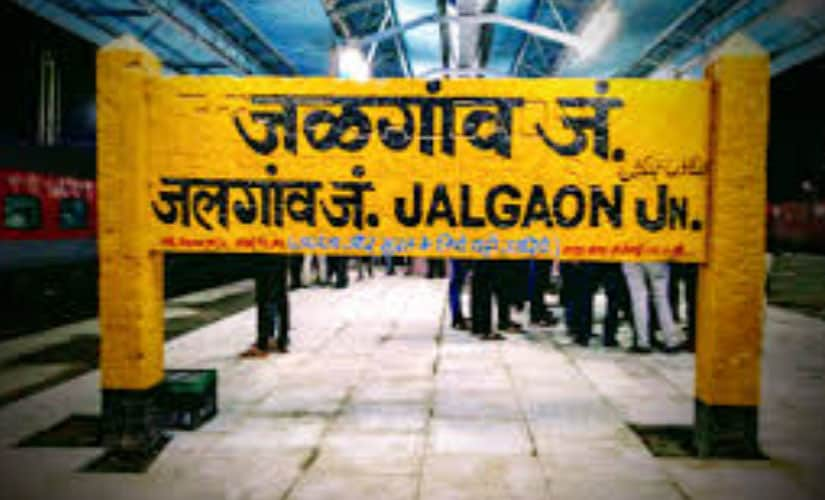 The Jalgaon Lok Sabha constituency covers the Assembly seats of Jalgaon City, Jalgaon Rural, Amalner, Erandol, Chalisgaon and Pachora. Image credit Vipul DANDAGE IND/Wikimedia Commons[/caption] Female electors: 7,98,906 Male electors: 9,09,027 Reserved: No Delimited: Yes. Assembly constituencies: Jalgaon City, Jalgaon Rural, Amalner, Erandol, Chalisgaon, Pachora. Results in last four Lok Sabha elections: It has been a BJP stronghold since 1999. The saffron party’s AT Nana Patil has been representing the constituency since 2009. Demographics: The constituency covers parts of Jalgaon district. As per the voter list of 2016, there are 1746597 electorates and 1898 polling stations in this constituency. 4. Raver Lok Sabha Constituency Constituency number: 4 Total electors: 15,93,370 Female electors: 7,50,688 Male electors: 8,42,682 Reserved: No Delimited: Yes. It was created in 2008. Edlabad Assembly segment was renamed Muktainagar Assembly constituencies: Chopda (ST), Raver, Bhusawal (SC), Jamner, Muktainagar, Malkapur Results in last four Lok Sabha elections: BJP’s Haribhau Madhav Jawale won the seat in 2009. In 2014, veteran BJP leader Eknath Khadse’s daughter in law Raksha Nikhil Khadse won the seat, defeating NCP’s Manishdada Jain. Demographics: The constituency is spread across large parts of Jalgaon district and a part of Buldhana district. Though traditionally it is a stronghold of the Leva-Patil community, Marathas became dominant here after delimitation. 5. Buldhana Lok Sabha Constituency Constituency number: 5 Total electors: 15,96,234 Female electors: 7,50,687 Male electors: 8,45,547 Reserved: No Delimited: Yes. It was de-reserved in 2008. Assembly constituencies: Buldhana, Chikhli, Sindhkhed Raja, Mehkar (SC), Khamgaon, Jalgaon (Jamod). Results in last four Lok Sabha elections: The seat has been held by Shiv Sena for the last four elections. Prataprao Ganpatrao Jadhav has been the MP since 2009. Demographics: It almost covers the entire district of Buldhana. It has a population of 22,32,480 people. A total of 18.21 percent of the people belong to Scheduled Castes and its literacy rate is 83.4 percent as per Census 2011. 6. Akola Lok Sabha Constituency Constituency number: 6 Total electors: 16,46,463 Female electors: 7,76,547 Male electors: 8,69,922 Reserved: No Delimited: Yes. Khamgaon and Borgaon Manju Assembly segments were dissolved in 2008. Assembly constituencies: Akot, Balapur, Aakola West, Akola East, Murtizapur (SC), Risod. Results in last four Lok Sabha elections: It has been a BJP stronghold. In 1999, Bharipa Bahujan Mahasangh’s Prakash Ambedkar, grandson of BR Ambedkar, won the seat. However, since 2004, BJP’s Sanjay Shamrao Dhotre has been the MP. Demographics: It covers the entire Akola district and parts of Washim district. The proportion of Ghatole Kunbi community, which is largely affiliated to the saffron party, is more in Washim and Akola. The economy of Akola district largely depends on agriculture. Its sex ratio is 946, higher than the state’s 929, and its literacy rate is 88 percent. A total of 20.07 percent of the population comprises Scheduled Castes. 7. Amravati Lok Sabha Constituency Constituency number: 7 Total electors: 16,11,365 Female electors: 7,63,315 Male electors: 8,48,050 Reserved: Yes. For Scheduled Castes. Delimited: Yes. It was a de-reserved constituency before 2008. Teosa Assembly segment was added from Wardha Lok Sabha constituency. Assembly constituencies: Badnera, Amravati, Teosa, Daryapur (SC). Melghat (ST), Achalpur Results in last four Lok Sabha elections: Shiv Sena has a stronghold in this constituency since 1999. Anandrao Vithoba Adsul has been representing the constituency since 2009. Demographics: As per reports, Dalit and Muslims form at least one-third of the electorate in the constituency. However, it is the Kunbi community which is the single most dominant electorate in Amravati, constituting around 30 percent of the population. 8. Wardha Lok Sabha Constituency Constituency number: 8 Total electors: 15,64,553 Female electors: 7,47,039 Male electors: 8,17,514 Reserved: No Delimited: Yes. Teosa Assembly segment was moved to Amravati Lok Sabha constituency. Morshi Assembly segment was added from Ramtek parliamentary constituency. Chandur and Pulgaon Assembly seats were dissolved. Dhamangaon Railway and Deoli were newly created Assembly seats. Assembly constituencies: Dhamangaon Railway, Morshi, Arvi, Deoli, Hinganghat, Wardha. Results in last four Lok Sabha elections: Prabha Rao of the Congress won the seat in 1999. In 2004, BJP’s Suresh Ganapat Waghmare grabbed the seat but lost it to Congress leader Datta Raghobhaji Meghe in 2009. In 2014, BJP’s Ramdas Chandrabhanji Tadas defeated Congress leader Sagar Dattatraya Meghe. Demographics: Once a Congress bastion, Wardha is considered an unpredictable seat since 1991. Teli is an influential caste in this constituency. Kunbis are also found in sizable numbers here. 9. Ramtek Lok Sabha Constituency: Constituency number: 9 Total electors: 16,77,245 Female electors: 7,90,088 Male electors: 8,87,157 Reserved: Yes. For Scheduled Castes Delimited: Yes. It was a de-reserved constituency earlier. Morshi Assembly segment was moved to Wardha Lok Sabha constituency. Kamleshwar Assembly segment was dissolved and Kamthi segment was added from Nagpur Lok Sabha constituency in 2008. Assembly constituencies: Katol, Savner, Hingna, Umred (SC), Kamthi, Ramtek Results in last four Lok Sabha elections: It is a Shiv Sena stronghold. Subodh Mohite was the MP from 1999 to 2009. Congress’ Mukul Balkrishna Wasnik came to power in 2009 but lost to Shiv Sena’s Krupal Balaji Tumane in 2014. Demographics: Once represented by former Prime Minister PV Narasimha Rao, Ramtek became a reserved constituency in 2008. This constituency has a significant population of Dalits and Kunbis. 10. Nagpur Lok Sabha Constituency Constituency number: 10 Total electors: 19,00,787 [caption id=“attachment_6337671” align=“alignnone” width=“825”] 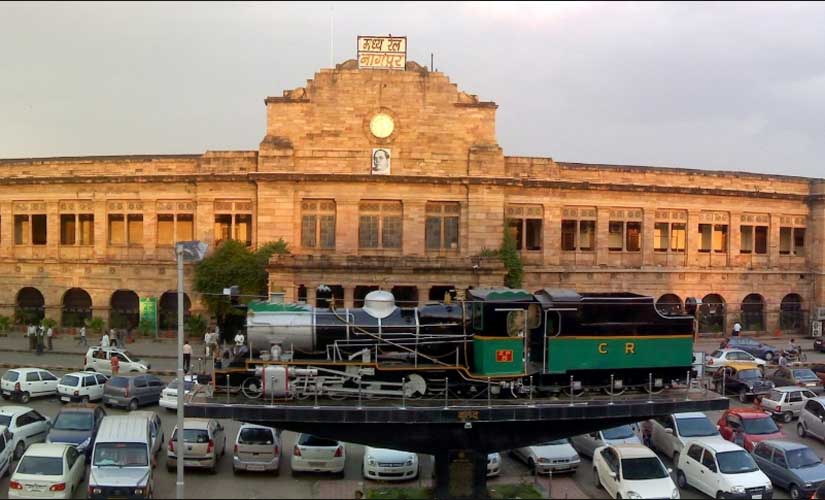 Congress leader Vilas Muttemwar was the MP till 2014 when senior BJP leader Nitin Gadkari unseated the former by more than 2 lakh votes. Image credit Ganesh Dhamodkar/Wikimedia Commons[/caption] Female electors: 9,20,792 Male electors: 9,79,995 Reserved: No Delimited: Yes. Kamthi Assembly segment was moved to Ramtek Lok Sabha constituency. Nagpur South West Assembly segment was created post-delimitation. Assembly constituencies: Nagpur South West, Nagpur South, Nagpur East, Nagpur Central, Nagpur West, Nagpur North (ST). Results in last four Lok Sabha elections: Traditionally, it is a Congress stronghold. Congress leader Vilas Muttemwar was the MP till 2014 when senior BJP leader Nitin Gadkari unseated the former by more than 2 lakh votes. Demographics: The high profile constituency, which is known for hosting the Rashtriya Swayamsevak Sangh, will see a direct battle between Union Minister Nitin Gadkari and Congress candidate Nana Patole. Kunbi, Halba, Dalit and Muslims form the majority of voters in the constituency. 11. Bhandara-Gondiya Lok Sabha Constituency Constituency number: 11 Total electors: 16,56,284 Female electors: 8,14,842 Male electors: 8,41,442 Reserved: No Delimited: Yes, it was created in 2008. Sakoli Assembly segment was added from Chimur Lok Sabha constituency which was dissolved due to delimitation. Bhandara, Tumsar, Tirora and Gondia Assembly segments were added from erstwhile Bhandara Lok Sabha constituency Assembly constituencies: Tumsar, Bhandara (SC), Sakoli, Arjuni Morgaon (SC), Tirora, Gondia Results in last four Lok Sabha elections: It is a BJP stronghold. Chunnilalbhau Thakur and Patle Shishupal Natthu of the BJP won the seat in 1999 and 2004 respectively. However, senior NCP leader Praful Patel got the seat in 2009 but lost to BJP’s Nanabhau Falgunrao Patole in 2014. Demographics: The Kunbi community is the most prominent in this constituency, as it has about 3 lakh voters. The second most powerful is the Powar community with about 2.5 lakh votes. Dalits contribute about 1.75 lakh votes, followed by tribals, Kohalis and fishermen. The Teli community also has 2.5 lakh voters. 12. Gadchiroli-Chimur Lok Sabha Constituency Constituency number: 12 Total electors: 14,69,767 Female electors: 7,15,840 Male electors: 7,53,927 Reserved: Yes, for Scheduled Tribes Delimited: Yes. It was created in 2008. It was earlier known as Chimur Lok Sabha constituency prior to delimitation. Amgaon Assembly segments (part of Bhandara Lok Sabha seat) was added in 2008. Armori, Bramhapuri and Chimur segments were added from the Chimur parliamentary seat while Gadchiroli was added from Chandrapur Lok Sabha seat. Assembly constituencies: Amgaon (ST), Armori (ST), Gadchiroli (ST), Aheri (ST), Bramhapuri, Chimur Results in last four Lok Sabha elections: Congress leader Marotrao Sainuji Kowase won the seat in 2009 while BJP’s Ashok Mahadeorao Nete won in 2014. Demographics: A tribal dominated constituency, it is also affected by Naxal violence. The constituency is spread across Gondiya, Gadchiroli and parts of Chandrapur district. All the three districts have a significant population of tribals, with Gadchiroli topping, where two-fifth of the population belong to Scheduled Tribes. 13. Chandrapur Lok Sabha Constituency Constituency number: 13 Total electors: 17,93,690 Female electors: 8,32,591 Male electors: 9,21,099 Reserved: No Delimited: Yes, Gadchiroli Assembly segment was removed in 2008. Wani Assembly segment was added from erstwhile Yavatmal Lok Sabha seat which was dissolved in 2008. Assembly constituencies: Rajura, Chandrapur (SC), Ballarpur, Warora, Wani, Arni (ST) Results in last four Lok Sabha elections: It’s is a BJP stronghold as Hansraj Gangaram Ahir has been the MP since 2004. Prior to that, Nareshkumar Chunnalal Puglia was the Congress MP from the seat. Demographics: It is spread across parts of Chandrapur and Yavatmal districts. Part of Vidarbha, Yavatmal district has a high rate of farmer suicides. It has a population of 27,72,348. The region receives aid from the Centre under the Backward Regions Grant Fund Programme. 14. Yavatmal-Washim Lok Sabha Constituency Constituency number: 14 Total electors: 17,43,498 Female electors: 8,27,449 Male electors: 9,16,049 Reserved: No Delimited: Yes, erstwhile Yavatmal Lok Sabha constituency was merged with Washim Lok Sabha seat in 2008. Assembly constituencies: Washim (SC), Karanja, Ralegaon (ST), Yavatmal, Digras, Pusad Results in last four Lok Sabha elections: Shiv Sena has won the elections since 2009. Bhavana Gawali Patil has been the MP in 2009. Demographics: The constituency is dominated by Kunbis, who constitute at least one-third of the voters. Banjara community comes a close second with a population of around 5 lakh. The population of Dalits and Muslims together comes to around 6 lakh. 15. Hingoli Lok Sabha Constituency Constituency number: 15 Total electors: 15,86,194 Female electors: 7,46,654 Male electors: 8,39,540 Reserved: No Delimited: Yes. Bhokar Assembly seat was moved to Nanded parliamentary constituency and Umarkhed Assembly seat was added after Washim Lok Sabha seat was dissolved in 2008. Assembly constituencies: Umarkhed (SC), Kinwat, Hadgaon, Basmath, Kalamnuri, Hingoli. Results in last four Lok Sabha elections: In 1999, Shiv Sena’s Shivaji Gyanbarao Mane won the seat but lost NCP leader Suryakant Patil in 2004. In 2009, Patil lost the seat to Shiv Sena’s Subhash Bapurao Wankhede. At present, Congress leader Rajeev Shankarrao Satav represents the seat since 2014. Demographics: It covers the entire Hingoli district and parts of Nanded and Yavatmal districts. The region is identified as a backward region under the Backward Regions Grant Fund Programme. Hingoli district has a population of 11,77,345 people as per Census 2011. The district came into existence in 1999. It has an SC population of 1,82,565. This seat, spread across parts of Marathwada and Vidarbha accounts for a high number of farmer suicides as well. 16. Nanded Lok Sabha Constituency Constituency number: 16 [caption id=“attachment_6337731” align=“alignnone” width=“825”] 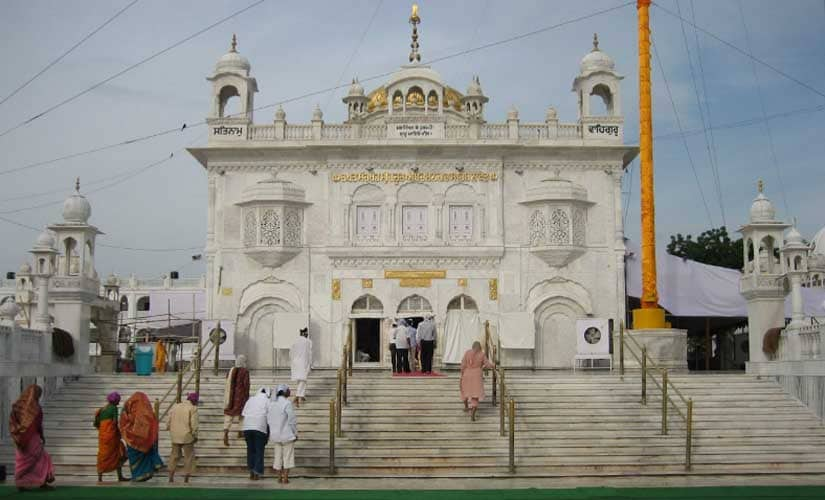 Located in the Marathwada region, tge constituency is known for farmer distress. Image credit Ajayvee/Wikimedia Commons[/caption] Total electors: 16,87,057 Female electors: 8,08,504 Male electors: 8,78,553 Reserved: No Delimited: Yes. Bhokar Assembly segment was added from Hingoli Lok Sabha seat and Ahmedpur Assembly seat was moved to Latur Lok Sabha constituency in 2008. Nanded North, Nanded South, Naigaon and Deglur were newly-created Assembly segments post-delimitation. Assembly constituencies: Bhokar, Nanded North, Nanded South, Naigaon, Deglur (SC), Mukhed Results in last four Lok Sabha elections: It has been a Congress stronghold. Bhaskarrao Bapurao Khatgaonkar represented the party in 1999 but lost to BJP leader DB Patil in 2004. However, Khatgaonkar won the seat again in 2009, defeating BJP’s Sambhaji Pawar. In 2014, Congress leader Ashok Chavan won the seat by defeating BJP’s DB Patil. Demographics: It covers almost the entire Nanded district. Located in the Marathwada region, it is known for farmer suicides and is identified as an economically backward district, receiving aid under the Backward Regions Grant Fund Programme. It has a population of 33,61,292 people with a sizeable Muslim population of 4.71 lakh. It has an SC population of 6,40,483. 17. Parbhani Lok Sabha Constituency Constituency number: 17 Total electors: 18,03,792 Female electors: 8,57,893 Male electors: 9,45,899 Reserved: No Delimited: Yes. Singnapur Assembly segment was dissolved in 2008. Assembly constituencies: Jintur, Parbhani, Gangakhed, Pathri, Partur, Gansavangi Results in last four Lok Sabha elections: It is a Shiv Sena bastion. Suresh Ramrao Jadhav was the MP from 1999 to 2004. Then Tukaram Ganpatrao Patil represented the seat till 2009. Ganeshrao Dudhgaonkar won the seat that year. Sanjay Jadhav is the current MP since 2014. Demographics: Parbhani is dominated by Maratha voters. There is also a sizable presence of Muslims, Dalits, OBCs and the upper caste Hindus. 18. Jalna Lok Sabha Constituency Constituency number: 18 Total electors: 16,12,054 Female electors: 7,45,328 Male electors: 8,66,726 Reserved: No Delimited: Yes. Georai Assembly segment was removed and PAithan Assembly seat was added from Aurangabad Lok Sabha constituency in 2008. Assembly constituencies: Jalna, Badnapur (SC), Bhokardan, Sillod, Pholambari, Paithan Results in last four Lok Sabha elections: It is a BJP bastion. Raosaheb Dadarao Danve has been the MP since 1999. Demographics: It covers parts of Jalna and Aurangabad districts. Jalna district has a population of 19,59,046 people with a sizeable Muslim population of 2.74 lakh Muslims. It is located in the Marathwada region of the state, where the main occupation is agriculture. 19. Aurangabad Lok Sabha Constituency Constituency number: 19 Total electors: 15,89,393 Female electors: 7,43,370 Male electors: 8,46,023 Reserved: No Delimited: Yes. Paithan Assembly segment was removed and Aurangabad Central Assembly seat was newly-created in 2008. Assembly constituencies: Kannad, Aurangabad Central, Aurangabad West (SC), Aurangabad East, Gangapur, Vaijapur. Results in last four Lok Sabha elections: It is a Shiv Sena stronghold, where Chandrakant Khaire has been the MP since 1999. Demographics: It is the only seat the AIMIM is fighting in Maharashtra this election. The seat has a sizable Muslim electorate. 20. Dindori Lok Sabha Constituency Constituency number: 20 Total electors: 15,30,139 Female electors: 7,22,121 Male electors: 8,08,018 Reserved: Yes. For Scheduled Tribes Delimited: Yes. It was carved out of the earlier Malegaon (ST) Lok Sabha constituency in 2008. Yevla and Niphad Assembly segments were added from Nashik Lok Sabha constituency. Assembly constituencies: Nandgaon, Kalwan (ST), Chandwad, Yevla, Niphad, Dindori (ST). Results in last four Lok Sabha elections: BJP’s Harishchandra Chavan has been the MP since 2009. Demographics: It is spread across parts of Nashik district. The major tribal groups in the region are Katkari, Kokna, Koli Mahadeo, Koli Malhar, Thakar, Warli and Dubla. As per Census 2011, Nashik district has a population of 6107187 people. It has an ST population of 1564369, according to the 2011 Census. 21. Nashik Lok Sabha Constituency Constituency number: 21 Total electors: 15,93,237 [caption id=“attachment_6337851” align=“alignnone” width=“825”]  The constituency is spread across parts of Nashik district. Image credit World8115/Wikimedia Commons[/caption] Female electors: 7,42,780 Male electors: 5,24,572 Reserved: No Delimited: Yes. Niphad and Yevla Assembly segments were removed in 2008 and Igatpuri Assembly seat was added from the erstwhile Dahanu Lok Sabha Constituency. Nashik Assembly seat was split into Nashik East Nashik West and Nashik Central. Assembly constituencies: Sinnar, Nashik East, Nashik Central, Nashik West, Deolali (SC), Igatpuri (ST) Results in last four Lok Sabha elections: Shiv Sena’s Uttamrao Dhikale became the MP in 2009. However, NCP’s Devidas Hingale won in 2004. In 2009, NCP’s Sameer Bhujbal won the seat and in 2014 he was succeeded by Shiv Sena leader Hemant Tukaram Godse. Demographics: It is spread across parts of Nashik district. Though a Hindu-majority district, it has a sizeable Muslim population of 6.93 lakh people. Its literacy rate is 82.3 percent, as per Census 2011. 22. Palghar Lok Sabha Constituency Constituency number: 22 Total electors: 1578077 Female electors: 7,47,645 Male electors: 8,30,432 Reserved: Yes. For Scheduled Tribes Delimited: Yes. It was carved out of Dahanu Lok Sabha constituency in 2008. Palghar and Vasai Assembly segments were added from Mumbai North Lok Sabha seat. Vikramgad, Boisar, Nalasopara Assembly seats were newly-carved in 2008. Assembly constituencies: Dahanu (ST), Vikramgad (ST), Palghar (ST), Boisar (ST), Nalasopara, Vasai Results in last four Lok Sabha elections: In 2009, Bahujan Vikas Aaghadi leader Baliram Sukur Jadhav won the seat but lost the seat to Chintaman Wanga of the BJP in 2014. BJP’s Rajendra Gavit won the bypoll after Wanga passed away in January 2018. Demographics: The constituency has a significant population of tribals, with four out of the six Assembly segments being reserved for candidates belonging to Scheduled Tribes. Due to proximity to Mumbai, areas like Vasai and Virar are largely urbanised. The Catholic community is an influential community in Vasai, which is why the Shiv Sena is going to extra mile to woo the religious minority. 23. Bhiwandi Lok Sabha Constituency Constituency number: 23 Total electors: 16,96,589 Female electors: 7,51,184 Male electors: 9,45,405 Reserved: No Delimited: Yes. It was created in 2008. Bhiwandi and Shahapur Assembly segments were added from erstwhile Dahanu Lok Sabha constituency. Parts of erstwhile Kalyan Assembly segment and Murbad segment were added from Thane Lok Sabha constituency. Assembly constituencies: Bhiwandi Rural (ST), Shahapur (ST), Bhiwandi East, Bhiwandi West, Kalyan West, Murbad Results in last four Lok Sabha elections: Congress leader Suresh Taware won the seat in 2009 but BJP’s Kapil Moreshwar Patil succeeded him in 2014. Demographics: Once known for being a Muslim-dominated constituency, post-delimitation Bhiwandi has a different demographic matrix where caste also plays a major role. While Bhiwandi West is Muslim dominated, Bhiwandi East and Kalyan West are dominated by Agri and Koli voters. Assembly segments like Bhiwandi Rural and Murbad have a sizeable population of the Kunbis. 24. Kalyan Lok Sabha Constituency Constituency number: 24 Total electors: 19,22,046 Female electors: 8,76,551 Male electors: 10,45,495 Reserved: No Delimited: Yes. It was created in 2008. Ambarnath and Ulhasnagar Assembly seats were moved from Thane Lok Sabha constituency. Assembly constituencies: Ambarnath (SC), Ulhasnagar, Kalyan East, Dombivali, Kalyan Rural, Mumbra-Kalwa. Results in last four Lok Sabha elections: Shiv Sena’s Anand Prakash Paranjpe became the MP in 2009. In 2014, party leader Shrikant Shinde defeated Paranjpe, who contested the polls on an NCP ticket. Demographics: The newly created constituency has the predominantly urban area of Kalyan-Dombivili within its boundaries. The constituency has a large Marathi-speaking population, with significant Agri and Kunbi populations. Brahmins and Marathas are also found in sizeable numbers. Muslims are found in significant numbers of sin pockets like Ambarnath and Mumbra. 25. Thane Lok Sabha Constituency Constituency number: 25 Total electors: 20,73,442 Female electors: 9,31,284 Male electors: 11,42,158 Reserved: No Delimited: Yes, parts of erstwhile Kalyan assembly segment and Murbad assembly seat were moved to Bhiwandi Lok Sabha constituency. Ambarnath and Ulhasnagar Assembly seats were removed. Assembly constituencies: Mira Bhayandar, Ovala Majiwada, Kopri-Pachpakhadi, Thane, Airoli, Belapur Results in last four Lok Sabha elections: NCP’s Sanjeev Naik became the MP in 2009 but lost to Shiv Sena leader Ranjan Vichare in 2014. Demographics: Agri-Koli community is influential in this constituency. However, due to its proximity to Mumbai, the constituency is gaining a cosmopolitan nature. Non-Marathi population form a large proportion of the population in Thane. 26. Mumbai North Lok Sabha Constituency Constituency number: 26 Total electors: 17,83,870 Female electors: 8,11,225 Male electors: 9,72,645 Reserved: No Delimited: Yes, Palghar and Vasai Assembly seats were removed in 2008. Kandivali and Malad Assembly segments were split post-delimitation. Dahisar, Charkop and Magathane Assembly seats were created in 2008. Assembly constituencies: Borivali, Dahisar, Magathane, Kandivali East, Charkop, Malad West Results in last four Lok Sabha elections: Congress leader Sanjay Nirupam won the seat in 2009 but lost it to BJP’s Gopal Shetty in 2014. Demographics: The constituency covers the northern parts of the suburbs in Mumbai, which have a large number of Maharashtrians, followed by Gujarati and North Indian voters. 27. Mumbai North-West Lok Sabha Constituency Constituency number: 27 Total electors: 17,75,428 Female electors: 7,88,520 Male electors: 9,86,908 Reserved: No Delimited: Yes. Goregaon Assembly seat was added from Mumbai North Lok Sabha constituency in 2008. Vandre, Vile Parle, Kherwadi, Amboli and Santacruz were removed from the constituency. Assembly constituencies: Jogeshwari East, Dindoshi, Goregaon, Versova, Andheri East, Andheri West. Results in last four Lok Sabha elections: A crucial vote-bank for Congress, the seat was won by Congress’ Gurudas Kamat in 2009. However, he lost to Shiv Sena’s Gajanan Chandrakant Kirtikar in 2014. Demographics: It is spread across western parts of Mumbai Suburban district. The district comprises 50.31 lakh males and 43.25 females as per Census 2011. The literacy rate stands at 80.96 percent. 28. Mumbai North-East Lok Sabha Constituency Constituency number: 28 Total electors: 16,68,357 Female electors: 7,45,341 Male electors: 9,23,016 Reserved: No Delimited: Yes. Chembur, Trombay, Kurla, Bhandup (before it was split in 2008) Assembly segments were removed from the constituency in 2008. Mankhurd Shivajinagar Assembly segment was created post-delimitation. Assembly constituencies: Mulund, Vikhroli, Bhandup West, Ghatkopar West, Ghatkopar East, Mankhurd Shivajinagar. Results in last four Lok Sabha elections: NCP’s Sanjay Patil won the seat in 2009 but lost to BJP leader Kirit Somaiya in 2014. Demographics: Mulund, Vikhroli, Ghatkopar (east) and Bhandup are dominated by Marathi voters while Ghatkopar east and west are dominated by Gujaratis. Mankhurd and Shivaji Nagar are dominated by Dalits and Muslims respectively. The constituency is a mix of middle and working class population. 29. Mumbai North-Central Lok Sabha Constituency Constituency number: 29 Total electors: 17,38,894 [caption id=“attachment_6338121” align=“alignnone” width=“825”] 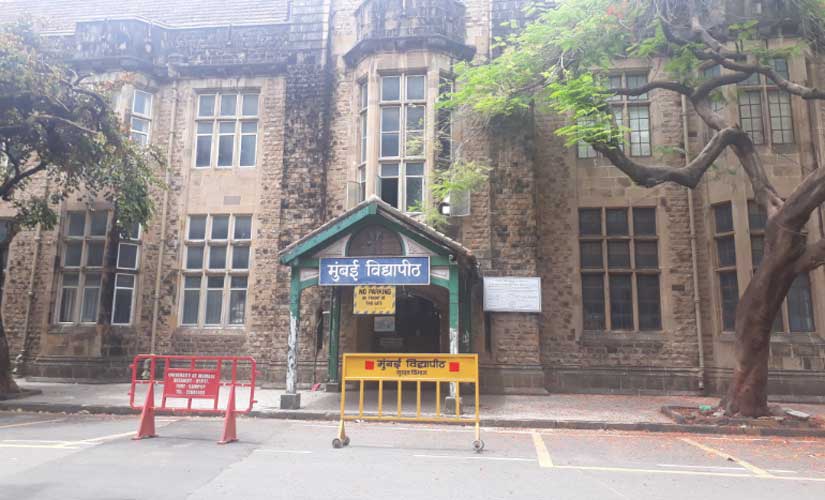 The Mumbai North-Central Lok Sabha constituency covers the Assembly segments of Vile Parle, Chandivali, Kurla (SC), Kalina, Vandre East and Vandre West. Image credit Pinakpani/Wikimedia Commons[/caption] Female electors: 7,71,420 Male electors: 9,67,474 Reserved: No Delimited: Yes. Vile Parle, Kurla, Vandre (before it was split in 2008) Assembly segments were added in 2008. Naigaum, Dadar, Matunga, Mahim, Dharavi and Nehrunagar Assembly segments were removed in 2008. Assembly constituencies: Vile Parle, Chandivali, Kurla (SC), Kalina, Vandre East, Vandre West. Results in last four Lok Sabha elections: Congress leader Priya Dutt won the seat in 2009 but lost to BJP leader Poonam Mahajan in 2014 in a close fight. The two candidates will face each other off in the upcoming polls as well. Demographics: This constituency houses many popular Bollywood celebrities who reside in parts of upmarket Bandra and Khar. Mumbai North Central is a cosmopolitan constituency, which is dominated by north Indians, minority and Dalit communities. 30. Mumbai South-Central Lok Sabha Constituency Constituency number: 30 Total electors: 14,47,885 Female electors: 6,54,084 Male electors: 7,93,801 Reserved: No Delimited: Yes. Chinchpokli, Nagpada, Mazgaon, Parel and Shivadi Assembly segments were dissolved in 2008. Assembly constituencies: Anushakti Nagar, Chembur, Dharavi (SC), Sion Koliwada, Wadala, Mahim Results in last four Lok Sabha elections: Congress leader Eknath Gaikwad won the seat in 2009 but lost to Rahul Shewale of the Shiv Sena in 2014. Demographics: Constituting Eastern suburbs of Mumbai, Mumbai South-Central has a significant Maharashtrian, Dalit, Gujarati, Marwadi population. Sikhs, Punjabis, Christians, and South Indians have their own pockets in this constituency. Like most areas of Mumbai, reports suggest that the constituency is witnessing a change in its demographic profile. 31. Mumbai South Lok Sabha Constituency Constituency number: 31 Total electors: 14,85,846 Female electors: 6,56,882 Male electors: 8,28,964 Reserved: No Delimited: Yes. Umarkhadi, Khetwadi and Opera House Assembly segments were dissolved in 2008. Assembly constituencies: Worli, Shivadi, Byculla, Malabar Hill, Mumbadevi, Colaba. Results in last four Lok Sabha elections: Congress leader Milind Deora won the seat in 2009 but lost it to Shiv Sena’s Arvind Sawant in 2014, even though the constituency has been a Congress stronghold for a long time. Demographics: Consisting of several upmarket localities of Mumbai, Mumbai South is a Congress stronghold. However, it also has several areas dominated by lower middle-income classes. According to reports, the traditional Maharashtrian areas like Girgaon, Lalbaug, Parel, Byculla, & Gamdevi are witnessing a rise in non-Maharashtrian population. There is a mix of working and middle-class Maharashtrians, Muslims, mercantile communities like Jains, Gujaratis, Marwadis along with North Indians. 32. Raigad Lok Sabha Constituency Constituency number: 32 Total electors: 15,32,781 Female electors: 7,80,290 Male electors: 7,52,491 Reserved: No Delimited: Yes. It was created in 2008. Pen, Alibag and Shrivardhan Assembly seats were part of erstwhile Kulaba Lok Sabha constituency which was dissolved in 2008. Mahad, Dapoli and Guhagar Assembly seats were added from Ratnagiri Lok Sabha constituency. Assembly constituencies: Pen, Alibag, Shrivardhan, Mahad, Dapoli, Guhagar Results in last four Lok Sabha elections: Shiv Sena’s Anand Geete has been the MP since 2009. Demographics: Raigad, which is significant in Maratha history, has been a Sena bastion. Union Minister Anant Geete has held the seat since 2009. In the constituency, Marathas, Kokni Muslims and Kunbis form a sizable section of the population. 33. Maval Lok Sabha Constituency Constituency number: 33 Total electors: 19,53,741 Female electors: 9,17,781 Male electors: 10,35,960 Reserved: No Delimited: Yes, it came into existence in 2008. Panvel Assembly segment was added when Kulaba Lok Sabha seat was dissolved post-delimitation. Karjat Assembly segment was added from Ahmednagar Lok Sabha constituency. Maval was added from the erstwhile Khed Lok Sabha constituency. Uran, Chinchwad and Pimpri were newly-created Assembly segments. Assembly constituencies: Panvel, Karjat, Uran, Maval, Chinchwad, Pimpri (SC) Results in last four Lok Sabha elections: Shiv Sena leaders have occupied the seat since 2009. In 2009, Gajanan Babar while in 2014, Shrirang Chandu Barne became the MP. Demographics: It is spread across parts of Raigad and Pune districts. STs form 11.58 percent of the population in Raigad district. It has a literacy rate of 83.14 percent as per Census 2011. Its sex ratio is 959 per 1,000 males. 34. Pune Lok Sabha Constituency Constituency number: 34 Total electors: 18,35,836 [caption id=“attachment_6338271” align=“alignnone” width=“825”] 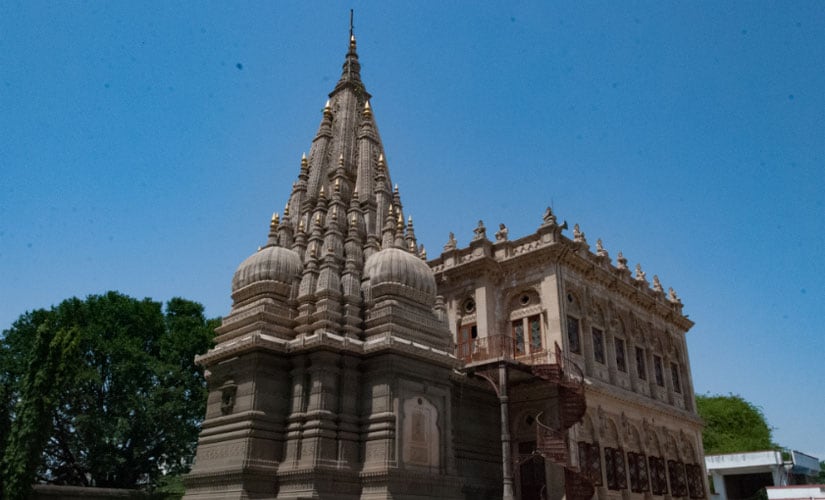 Pune parliamentary constituency covers the Assembly segments of Vadgaon Sheri, Shivajinagar, Kothrud, Parvati, Pune Cantonment (SC) and Kasba Peth. Image credit Bikashrd/Wikimedia Commons[/caption] Female electors: 8,86,269 Male electors: 9,49,567 Reserved: No Delimited: Yes. Bhavani Peth and Bhopodi Assembly segments were dissolved in 2008. Kothrud segment was newly-created. Assembly constituencies: Vadgaon Sheri, Shivajinagar, Kothrud, Parvati, Pune Cantonment (SC), Kasba Peth Results in last four Lok Sabha elections: BJP’s Pradeep Rawat won the seat in 1999. However, Congress leader Suresh Kalmadi held the seat from 2004 to 2014. BJP’s Anil Shirole is the MP since 2014. Demographics: Pune is a largely urban constituency post the 2008 delimitation. Marathas are the dominant vote bank in this constituency. Brahmins also account for a significant chunk of the population. 35. Baramati Lok Sabha Constituency Constituency number: 35 Total electors: 18,13,543 Female electors: 8,53,156 Male electors: 9,60,387 Reserved: No Delimited: Yes. Bhor Assembly seat was added from erstwhile Khed Lok Sabha constituency while Shirur Assembly segment was removed in 2008. Assembly constituencies: Daund, Indapur, Baramati, Purandar, Bhor, Khadakwasala. Results in last four Lok Sabha elections: It is an NCP-Congress stronghold. NCP chief Sharad Pawar was the MP till 2009. Pawar’s daughter Supriya Sule has been representing the constituency since 2009. Demographics: It is spread across parts of Pune district. The district has a literacy rate of 86.2 percent which is higher than the state average. 36. Shirur Lok Sabha Constituency Constituency number: 36 Total electors: 18,24,112 Female electors: 8,50,876 Male electors: 9,73,236 Reserved: No Delimited: Yes. It was created in 2008. Shirur Assembly segment was added from Baramati Lok Sabha constituency. Assembly constituencies: Junnar, Ambegaon, Khed Alandi, Shirur, Bhosari, Hadapsar Results in last four Lok Sabha elections: Shiv Sena’s Shivaji Adhalrao Patil has been the MP since 2009 Demographics: It is spread across parts of Pune district. Though a Hindu-majority district, its Muslim population stands at 6.37 lakh as per Census 2011. 37. Ahmednagar Lok Sabha Constituency Constituency number: 37 Total electors: 16,99,408 Female electors: 8,00,589 Male electors: 8,98,819 Reserved: No Delimited: Yes. Karjat and Pathardi Assembly segments were removed from the seat in 2008. Rahuri and Parner Assembly constituencies were added from erstwhile Kopargaon Lok Sabha seat, which was dissolved post-delimitation. Assembly constituencies: Shevgaon, Rahuri, Parner, Ahmednagar City, Shrigonda, Karjat Jamkhed. Results in last four Lok Sabha elections: BJP’s Dilipkumar Gandhi won the seat in 1999, 2009 and 2014. In 2004, NCP’s Tukaram Gadakh defeated BJP’s NS Pharande to win the seat. Demographics: It covers parts of Ahmednagar district. Located in Western Maharashtra, the district receives funding from the Centre under the Backward Regions Grant Fund Programme. In terms of area, it is the largest district in the state. The district has a population of 45,43,159, of which SCs comprise 12.63 percent. 38. Shirdi Lok Sabha Constituency Constituency number: 38 Total electors: 14,59,712 Female electors: 6,93,791 Male electors: 7,65,921 Reserved: Yes. For Scheduled Tribes Delimited: Yes. It came into existence in 2008. Sangmner, Shirdi, Kopargaon and Shrirampur Assembly segments were added from erstwhile Kopargaon Lok Sabha constituency. Assembly constituencies: Akole (ST), Sangmner, Shirdi, Kopargaon, Shrirampur (SC), Nevasa Results in last four Lok Sabha elections: Shiv Sena’s Bhausaheb WAkchaure defeated RPI(A) leader Ramdas Athawale in 2009. In 2014, Shiv Sena leader Sadashiv Kisan Lokhande won the seat. Demographics: It is spread across parts of Ahmednagar district. 39. Beed Lok Sabha Constituency Constituency number: 39 Total electors: 17,92,650 Female electors: 8,29,188 Male electors: 9,63,462 Reserved: No Delimited: Yes. Georai Assembly seat was added from Jalna Lok Sabha constituency in 2008. Assembly constituencies: Georai, Majalgaon, Beed, Ashti, Kaij (SC), Parli Results in last four Lok Sabha elections: Jaisinghrao Gaikwad Patil was the MP from 1999 to 2009. In 1999, he contested the seat from BJP while in 2004, it was on an NCP ticket. In 2009, late BJP leader Gopinath Munde won the seat. He retained the seat in the 2014 but died a week after becoming a Cabinet minister. After Munde’s untimely death, his daughter Pritam won the seat in the ensuing by-election. Demographics: The Maratha and Vanjari communities, with roughly around five lakh voters each, hold sway in the constituency. Moreover, Muslims and Dalits together account for nearly five Lakh voters. 40. Osmanabad Lok Sabha Constituency Constituency number: 40 Total electors: 17,26,793 Female electors: 7,93,955 Male electors: 9,32,838 Reserved: No Delimited: Yes. It was de-reserved in 2008. Ausa and Omerga Assembly segments were moved from Latur Lok Sabha constituency. Assembly constituencies: Ausa, Omerga (SC), Tuljapur, Osmanabad, Paranda, Barshi Results in last four Lok Sabha elections: Shiv Sena leader Shivaji Vithhalrao Kamble became the MP in 1999. In 2004, Shiv Sena’s Nahire Kalpana Ramesh won the seat. In 2009, NCP’s Padmasinha Patil defeated Shiv Sena leader Ravindra Gaikwad. However, Gaikwad trounced Patil in the 2014 polls. Demographics:
The fight in this constituency has taken a dynastic turn. In Osmanabad, Shiv Sena’s Omraje Nimbalkar takes on NCP’s Ranajagit Sinh Patil, who is also his cousin. Incidentally, their rivalry transcends two generations. Patil’s father Padmasinh Patil, a staunch Sharad Pawar loyalist, is accused of plotting the murder of Nimbalkar’s father, former Congress leader Pawanraje Nimbalkar.
41. Latur Lok Sabha Constituency Constituency number: 41 Total electors: 16,82,607 Female electors: 7,84,688 Male electors: 8,97,919 Reserved: Yes. For Scheduled Castes Delimited: Yes. It was a de-reserved constituency before delimitation. Ahmedpur Assembly segment was earlier in Nanded Lok Sabha constituency before 2008. Ausa and Omerga Assembly segments were moved to Osmanabad Lok Sabha constituency. Assembly constituencies: Loha, Latur Rural, Latur City, Ahmedpur, Udgir (SC), Nilanga Results in last four Lok Sabha elections: In 1999, Congress leader Shivraj Vishwanath Patil won the seat, but lost to BJP’s Rupatai Diliprao Nilangekar Patil in 2004. In 2009, Congress candidate Jayawant Gangaram Awale won the seat and was succeeded by BJP leader Sunil Baliram Gaikwad in 2014. Demographics: It covers parts of Latur and Nanded districts. Latur has a population of 24,54,196 as Census 2011. Of this, 20.06 lakh people are Hindus. The sex ratio in the district is 928 while the literacy rate is 77.3 percent. Agriculture is the main source of employment in the district. The SC population is 19.6 percent of the total district population. 42. Solapur Lok Sabha Constituency Constituency number: 42 Total electors: 17,02,755 Female electors: 8,09,019 Male electors: 8,93,736 Reserved: Yes. For Scheduled Castes Delimited: Yes. It was a de-reserved constituency prior to 2008. Mohol and Pandharpur Assembly segments were added from erstwhile Pandharpur Lok Sabha constituency which was dissolved in 2008. Assembly constituencies: Mohol (SC), Solapur City North, Solapur City Central, Akkalkot, Solapur South, Pandharpur. Results in last four Lok Sabha elections: Congress leader Sushil Kumar Shinde won the seat in 1999. In 2004, BJP’s Subhash Deshmukh won the seat. In 2009, Congress leader Sushil Kumar Shinde won the seat again but lost it to BJP leader Sharad Bansode in 2014. Demographics: Muslims, who constitute 20 percent of the population, along with Scheduled Castes (14.58 percent), form a sizeable section of the electorate in the constituency. 43. Madha Lok Sabha Constituency Constituency number: 43 Total electors: 17,27,308 Female electors: 8,14,572 Male electors: 9,12,736 Reserved: No Delimited: Yes. It came into existence in 2008. Karmala Assembly segment was added from Osmanabad Lok Sabha constituency. Madha, Malshiras and Sangole Assembly segments were added from erstwhile Pandharpur Lok Sabha seat in 2008. Phaltan and Man Assembly seats were added from Satara Lok Sabha constituency. Assembly constituencies: Karmala, Madha, Sangole, Malshiras (SC), Phaltan (SC), Man Results in last four Lok Sabha elections: NCP chief Sharad Pawar won the election in 2009. In 2014, NCP leader Vijaysinh Mohite Patil defeated Swabhimani Paksha leader Sadabhau Khot. Demographics: It is spread across parts of Solapur and Satara districts. Madha is largely a rural constituency, where the majority of the population is engaged in farming. This constituency is also known for being a NCP stronghold.
44. Sangli Lok Sabha Constituency
Constituency number: 44 Total electors: 16,49,107 Female electors: 7,87,525 Male electors: 8,61,582 Reserved: No Delimited: Yes, Palus-Kadegaon Assembly segment was created in 2008. Tasgaon and Kavathe Mahankal Assembly seats were merged. Bhilwadi Wangi Assembly constituency was dissolved. Assembly constituencies: Miraj, Sangli (SC), Palus-Kadegaon, Khanapur, Tasgaon-Kavathe Mahankal, Jat Results in last four Lok Sabha elections: It is a Congress stronghold. Congress leader Prakash Vasantrao Patil won the seat in 1999 and was succeeded by Congress candidate Prakash Vasantdada Patil in 2004. However, the latter passed away in 2005 and his son Pratik Prakashbapu Patil won the seat in the 2006 bypoll and continued till 2014. He lost to BJP’s Sanjaykaka Patil in 2014. Demographics: It is spread across parts of Sangli district. The district has a population of 28,22,143 people as per Census 2011. It is one of the least urbanised districts in the state and is the largest turmeric producing districts in Maharashtra. The sex ratio in the district is 966 females per 1,000 males and the literacy rate is 81.48 percent. 45. Satara Lok Sabha Constituency Constituency number: 45 Total electors: 17,19,998 Female electors: 8,35,978 Male electors: 8,84,020 Reserved: No Delimited: Yes. Phaltan and Man Assembly seats were removed from the constituency in 2008. Karad North, Karad South and Patan assembly segments were added from erstwhile Karad Lok Sabha constituency which was dissolved in 2008. Assembly constituencies: Wai, Koregaon, Karad North, Karad South, Patan, Satara. Results in last four Lok Sabha elections: It’s is an NCP stronghold. NCP leader Laxmanrao Pandurang Jadhav was the MP from 1999 to 2009. Udyanraje Pratapsingh Bhonsle of the NCP has been the MP since 2009. Demographics: It is spread across large parts of Satara district. The district has a population of 30,03,741 as per Census 2011. A total of 10.76 percent of the population belongs to Scheduled Castes. Its literacy rate is 82.87 percent and the sex ratio is 988. It is one of the least urbanised districts with only 19 percent of its population living in urban areas. 46. Ratnagiri-Sindhudurg Lok Sabha Constituency Constituency number: 46 Total electors: 13,67,361 Female electors: 701693 Male electors: 6,65,668 Reserved: No Delimited: Yes, it was created in 2008. Dapoli and Guhagar Assembly seats were removed from the erstwhile Ratnagiri Lok Sabha constituency which was dissolved in 2008. Rajapur and Sawantwadi Assembly segments were added from the erstwhile Rajapur Lok Sabha constituency which was dissolved in 2008. Assembly constituencies: Chiplun, Ratnagiri, Rajapur, Kankavli, Kudal, Sawantwadi Results in last four Lok Sabha elections: Congress leader Nilesh Rane won the seat in 2009 but lost to Shiv Sena’s Vinayak Raut in 2014. Demographics: It covers the entire Sindhudurg district and parts of Ratnagiri district. Sindhudurg district has a population of 8,49,651 persons as per Census 2011. Its literacy rate is 85.56 percent and the sex ratio is 1,036 females per 1,000 males. A majority of the population is dependent on agriculture for their livelihood. Marine fishery is the most important non-agriculture activity in the district. The district is well known for its mango crops, cashew and processing industries. 47. Kolhapur Lok Sabha Constituency Constituency number: 47 Total electors: 17,58,300 [caption id=“attachment_6338171” align=“alignnone” width=“825”] 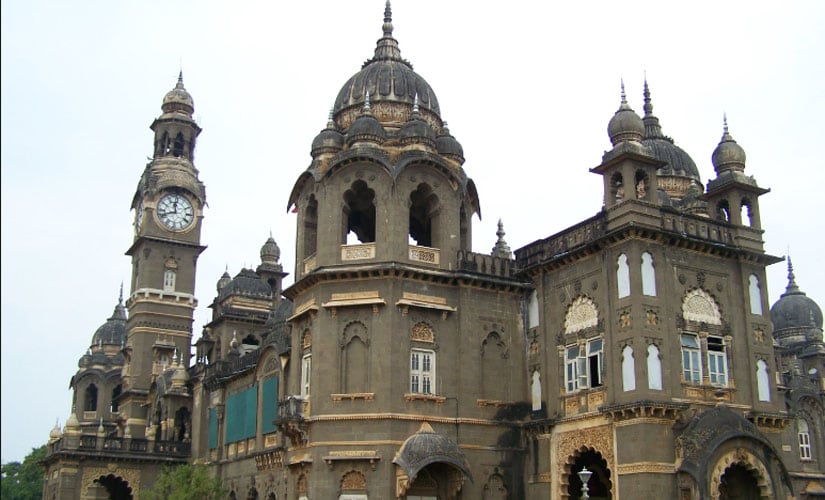 Radhanagiri Assembly segment was added to this constituency from erstwhile Ichalkaranji Lok Sabha seat which was dissolved in 2008. Image credit Vijayshankar.munoli/Wikimedia Commons[/caption] Female electors: 8,48,974 Male electors: 9,09,326 Reserved: No Delimited: Yes. Radhanagiri Assembly segment was added from erstwhile Ichalkaranji Lok Sabha seat which was dissolved in 2008. Sangrul and Gadhinglaj Assembly segments were dissolved from the Kolhapur Lok Sabha seat as well. Assembly constituencies: Chandgad, Radhanagari, Kagal, Kolhapur South, Karvir, Kolhapur North. Results in last four Lok Sabha elections: It is an NCP stronghold. Sadashivrao Mandlik was the MP from 1999 to 2009. In 2009, he contested as an Independent candidate and defeated NCP’s Chhatrapati Sambhajirao Shahu. In 2014, NCP leader Dhananjay Mahadik defeated Shiv Sena’s Sanjay Mandalik. Demographics: It covers parts of Kolhapur district. Kolhapur district has a population of 38,76,001 people as per Census 2011. SCs constitute 13.01 percent of the district population while STs form 0.78 percent. Though a Hindu-majority district, it has a Muslim population of 2.86 lakh. 48. Hatkanangle Lok Sabha Constituency Constituency number: 48 Total electors: 16,30,598 Female electors: 7,80,024 Male electors: 8,50,574 Reserved: No Delimited: Yes. It came into existence again in 2008. Shirol and Shahuwadi Assembly seats were added from the erstwhile Ichalkaranji Lok Sabha seat. Shirud Assembly segment was added from the erstwhile Karad Lok Sabha constituency. Assembly constituencies: Shahuwadi, Hatkanangle (SC), Ichalkaranji, Shirol, Islampur, Shirala Results in last four Lok Sabha elections: Raju Shetti, president of the Swabhiman Paksha has been the MP since 2009. Demographics: It is spread across parts of Kolhapur district. The literacy rate of the district is 81.5 percent while the sex ratio is 957 females per 1,000 males, which is lower than the state’s average. The district is famous for ‘Kolhapur Saaz’ and ‘Kolhapur Chappals’.


)
)
)
)
)
)
)
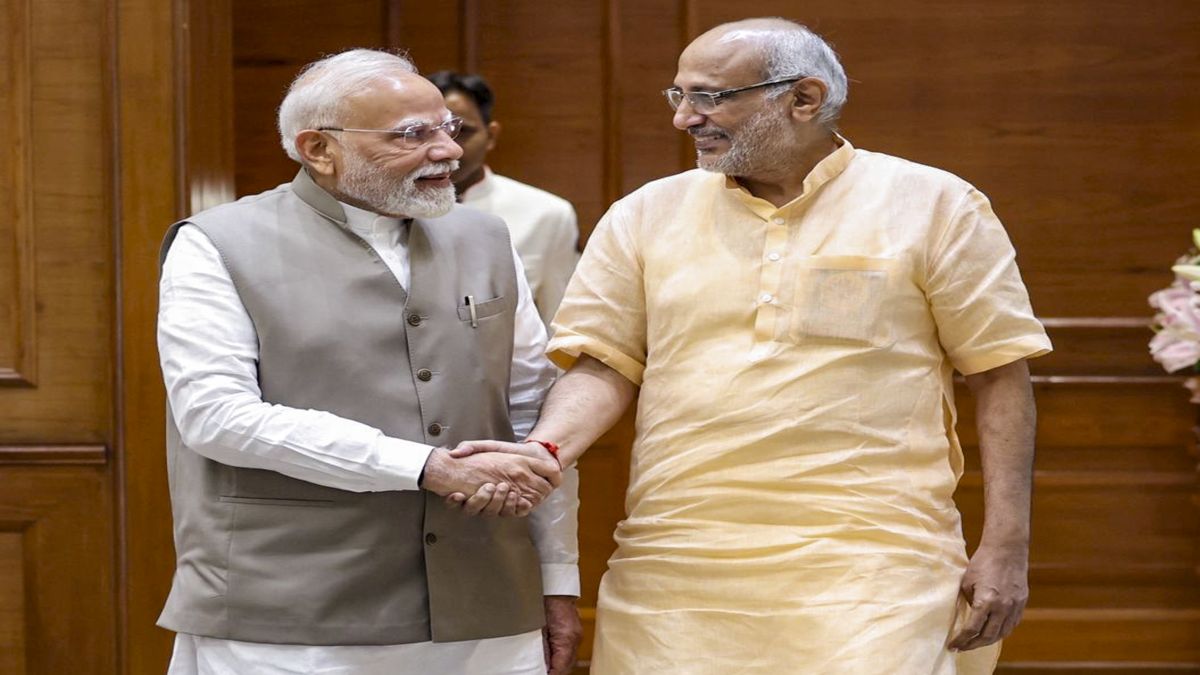)
)



